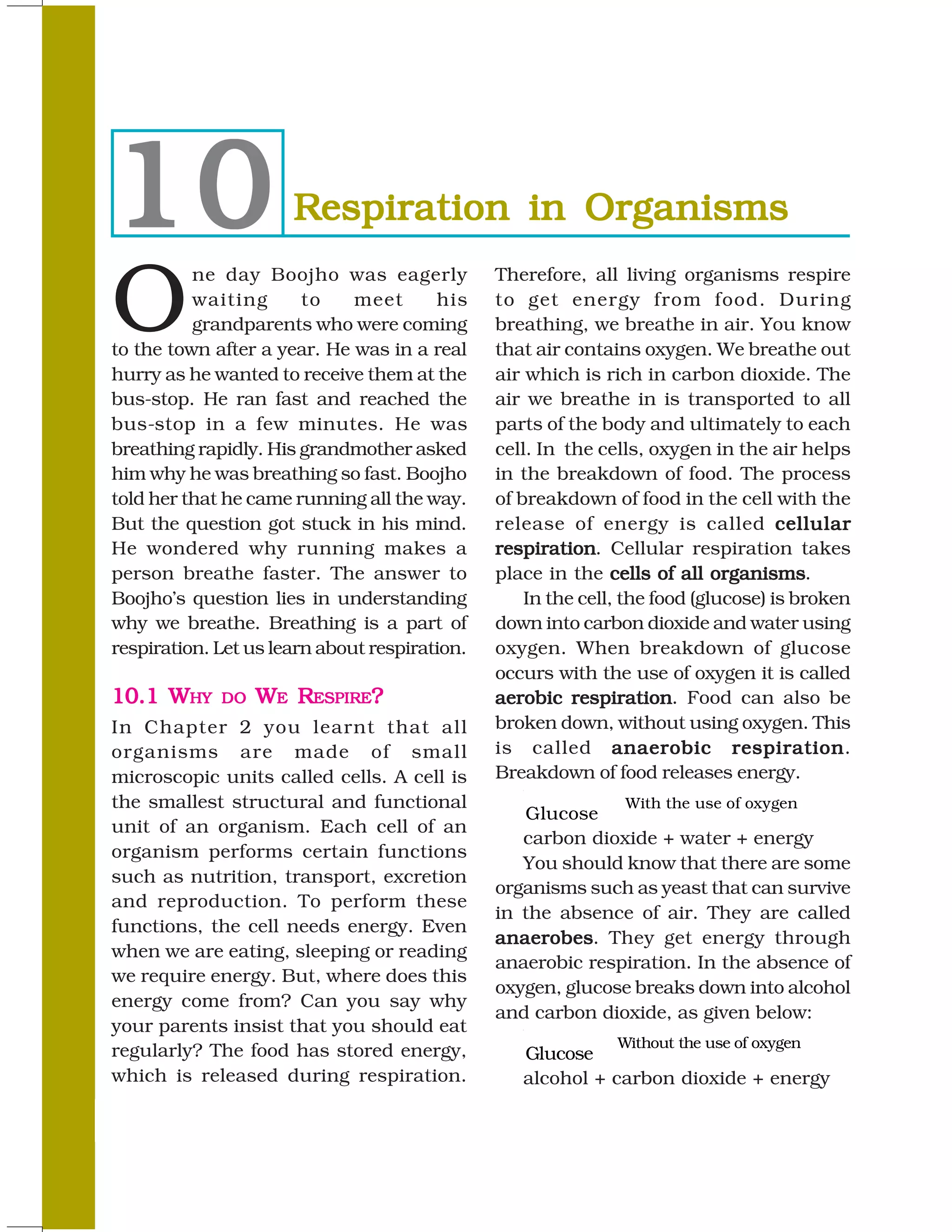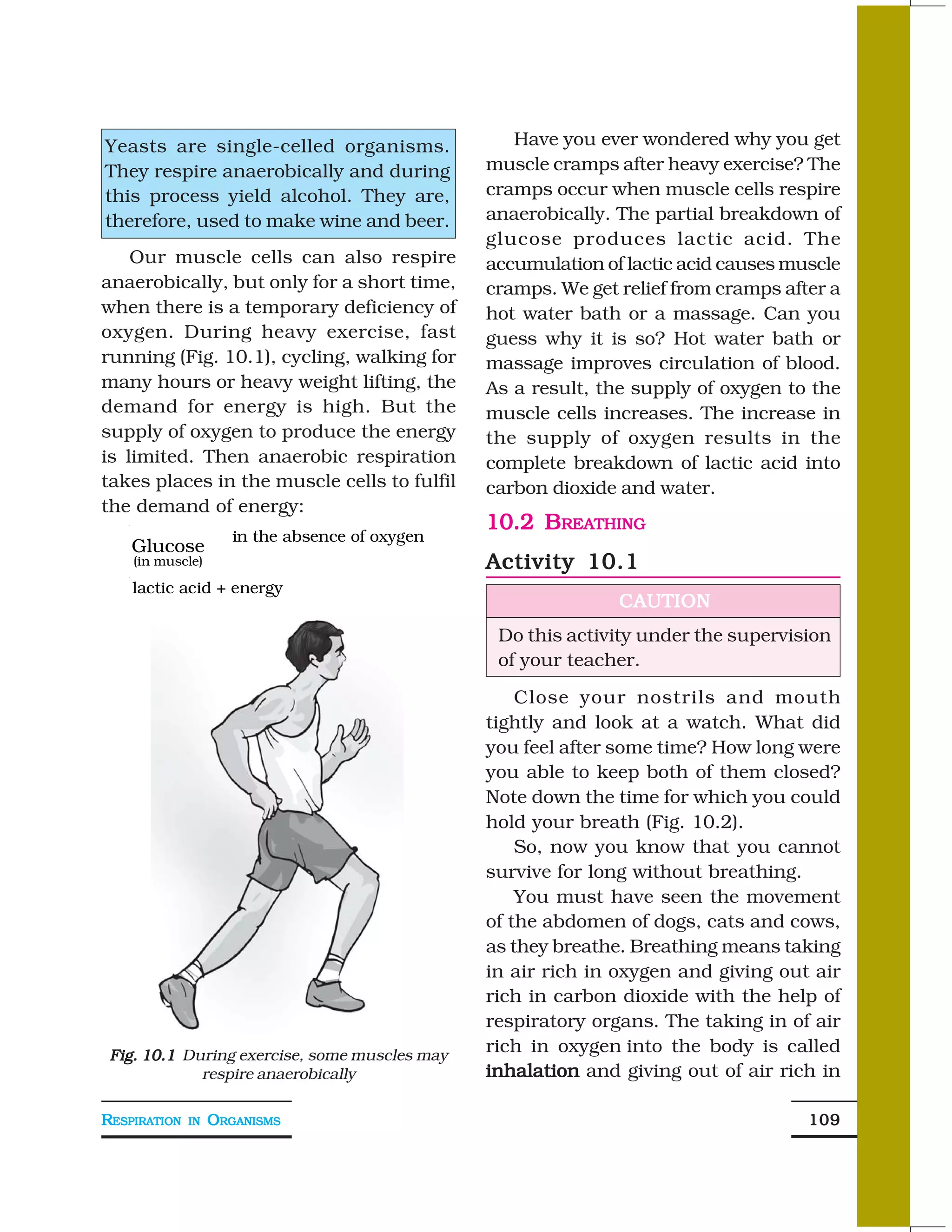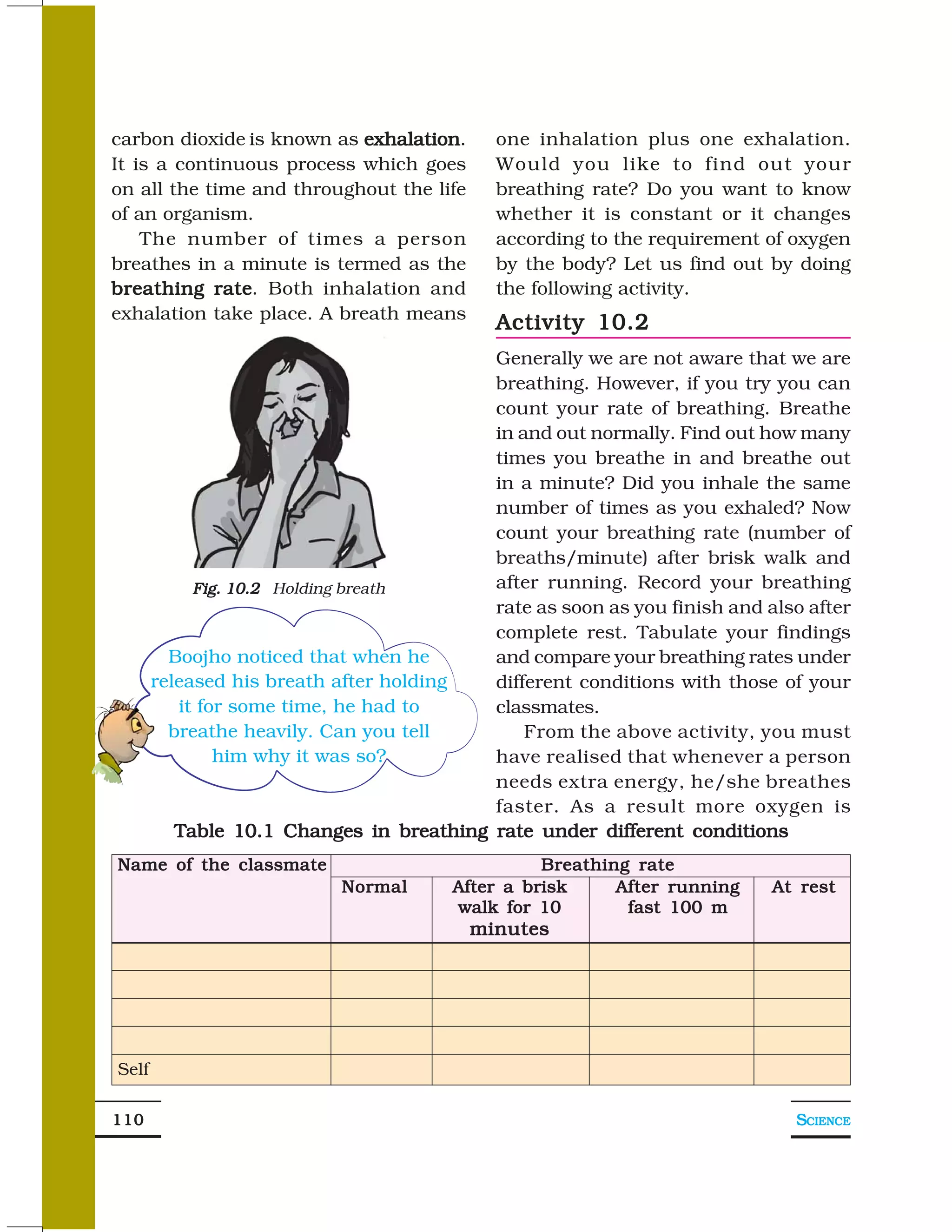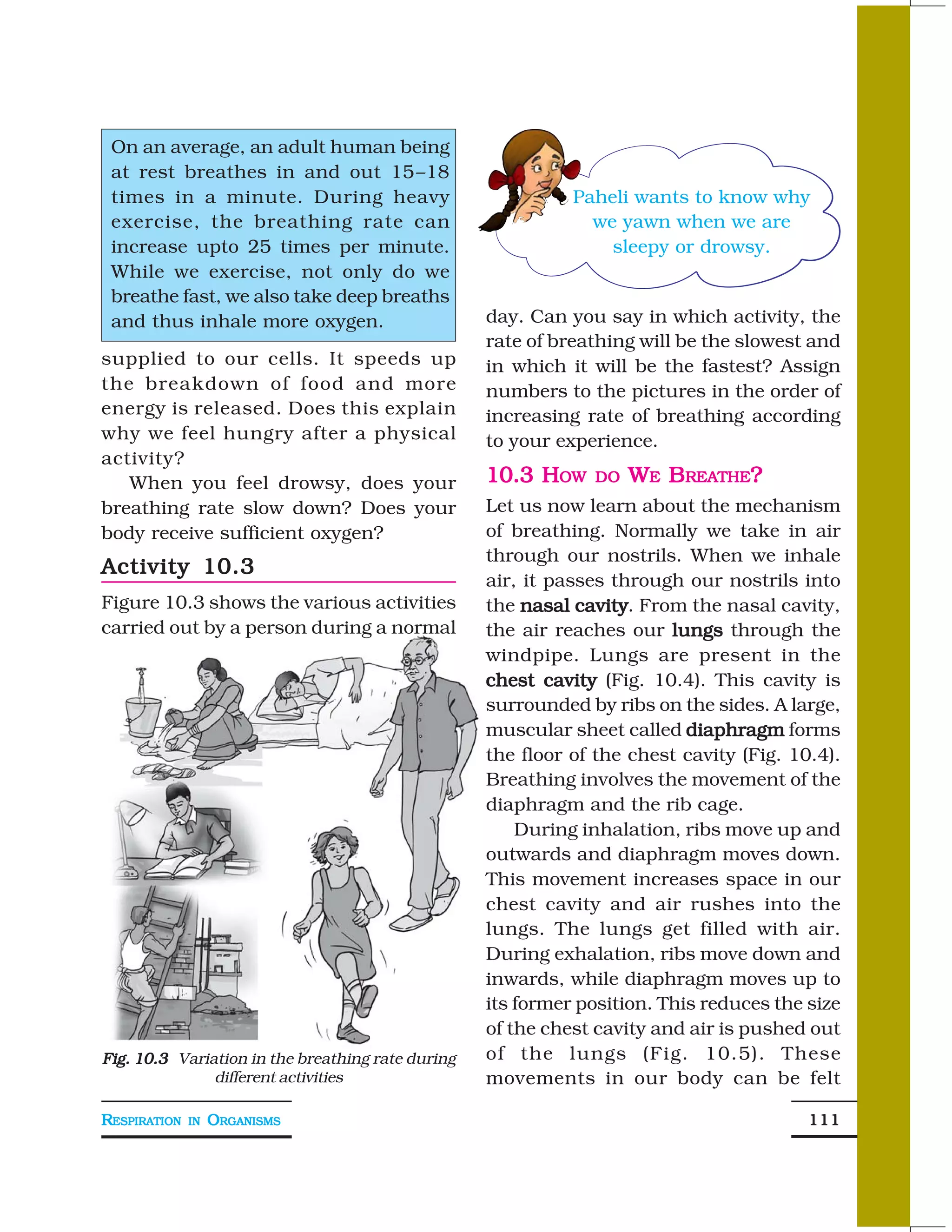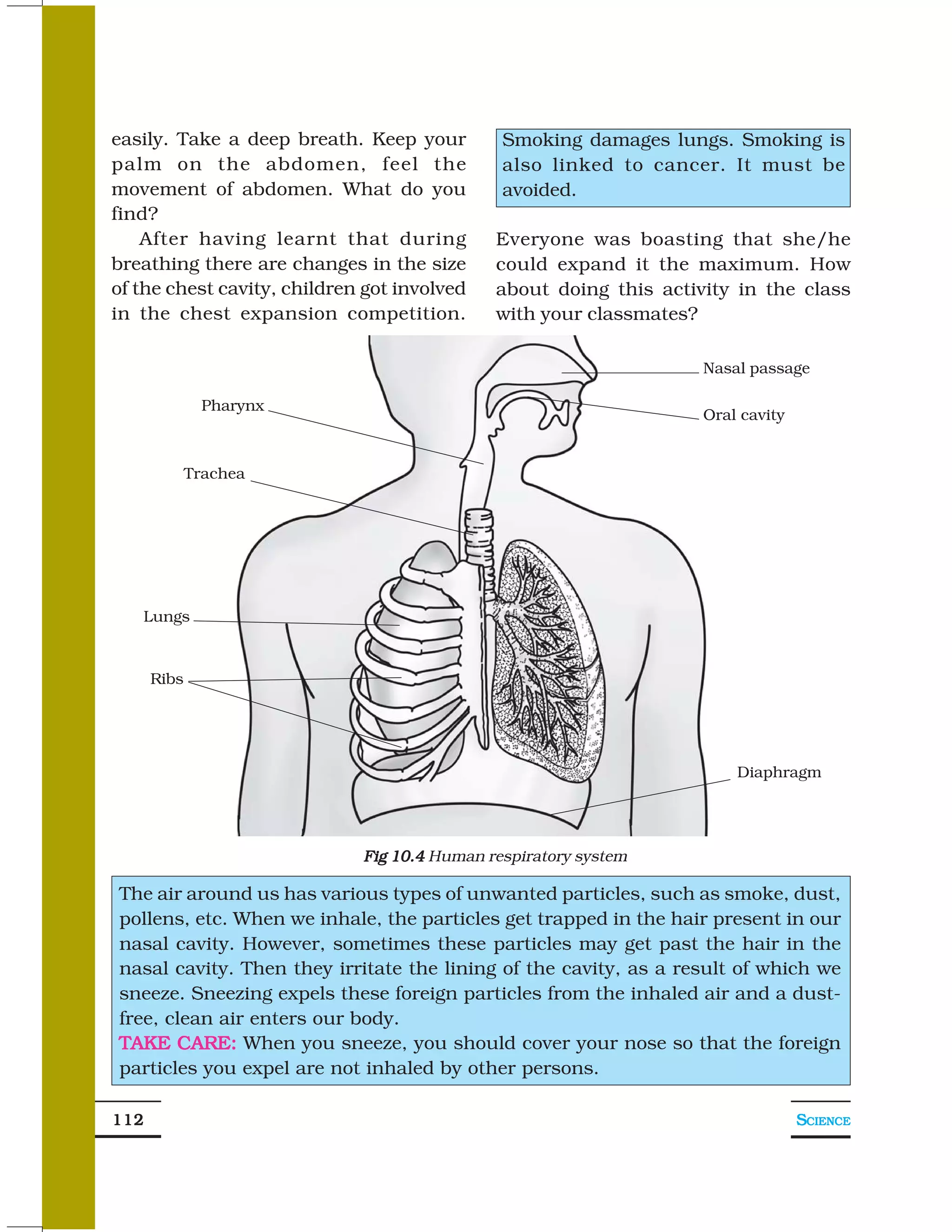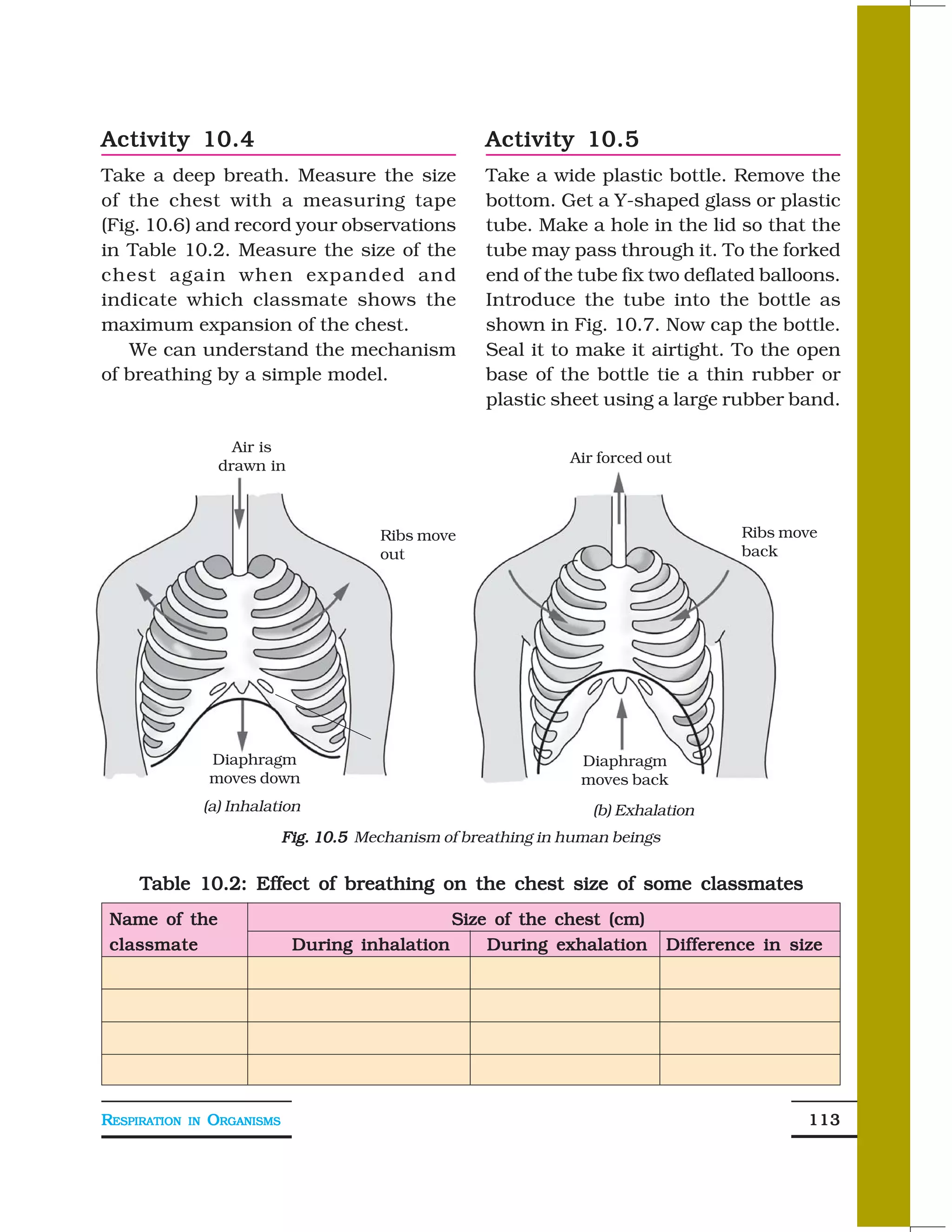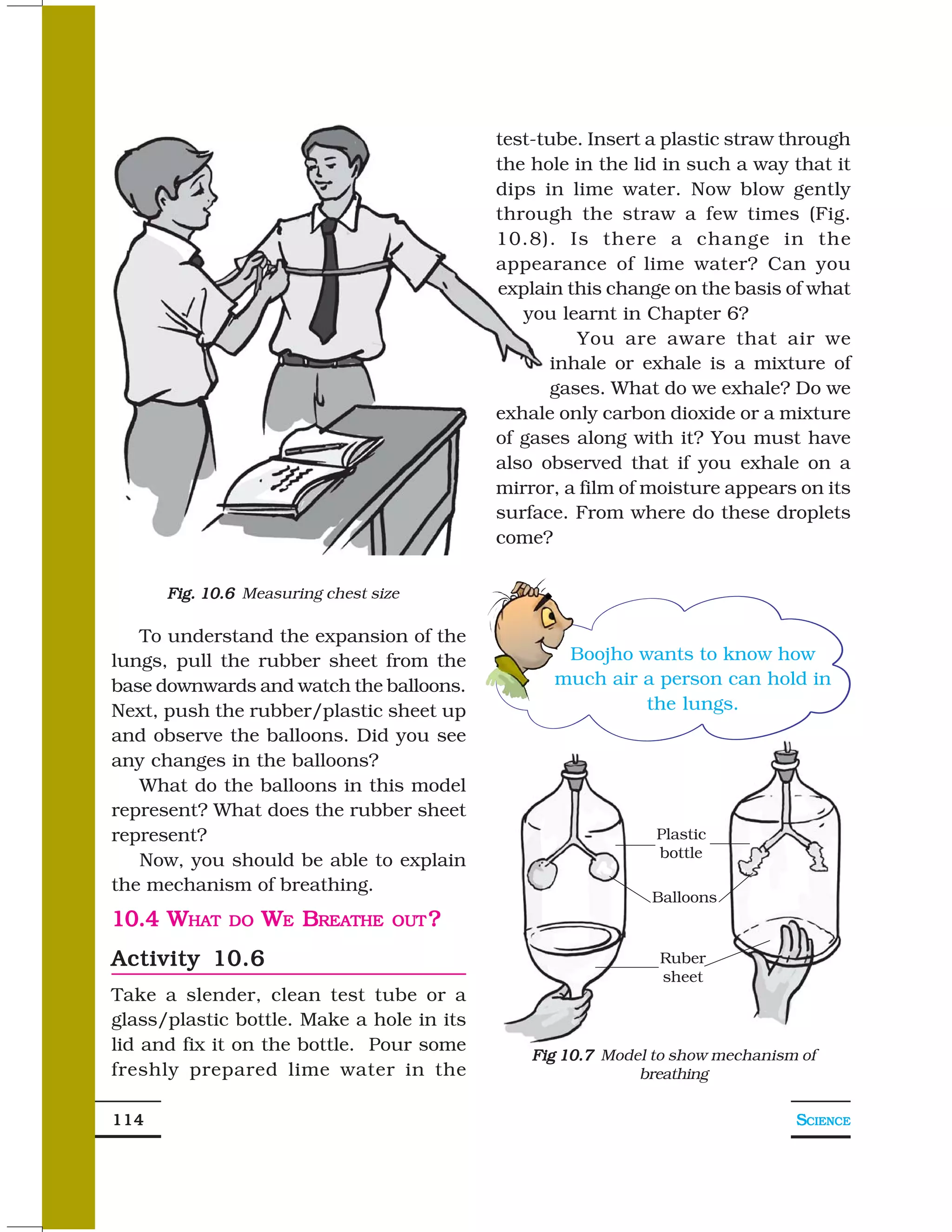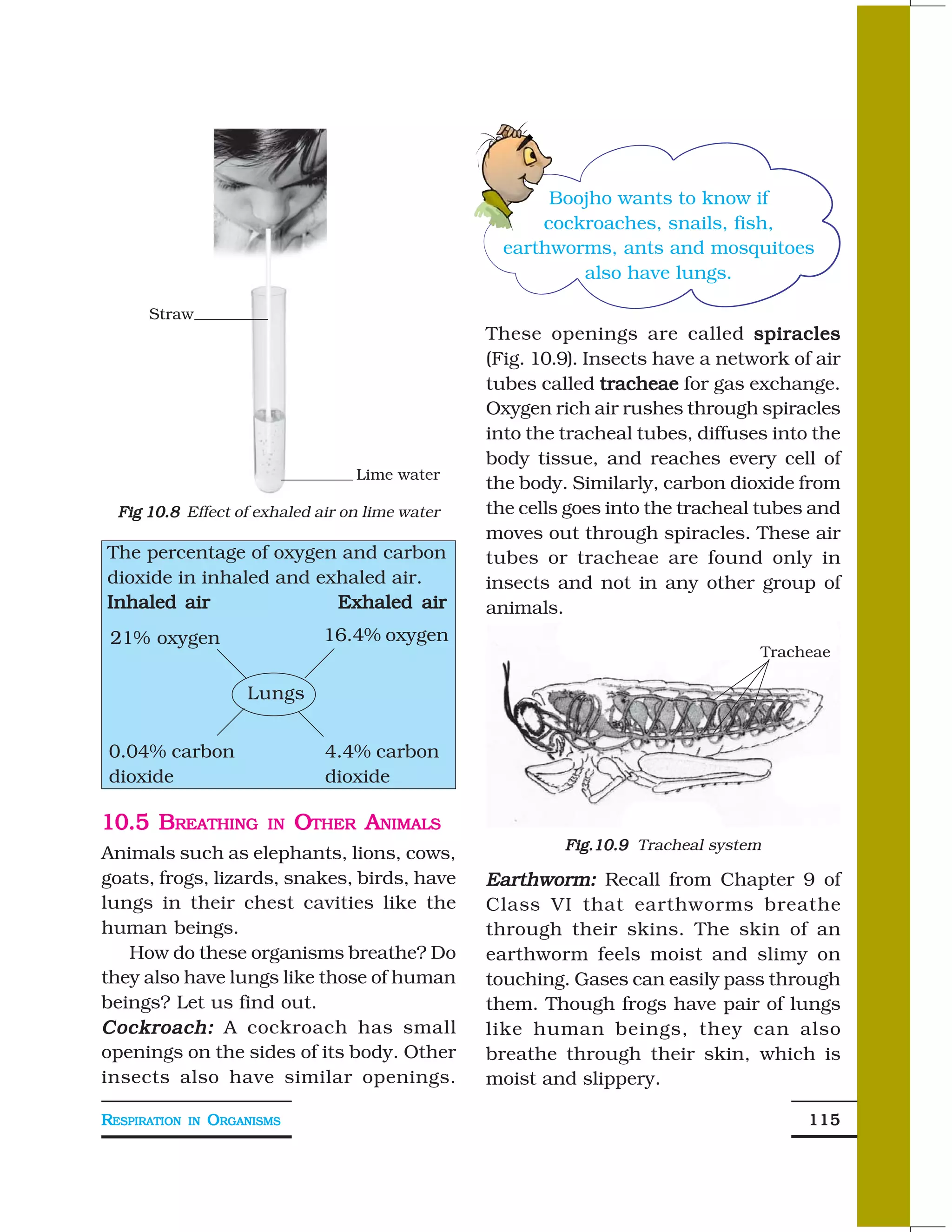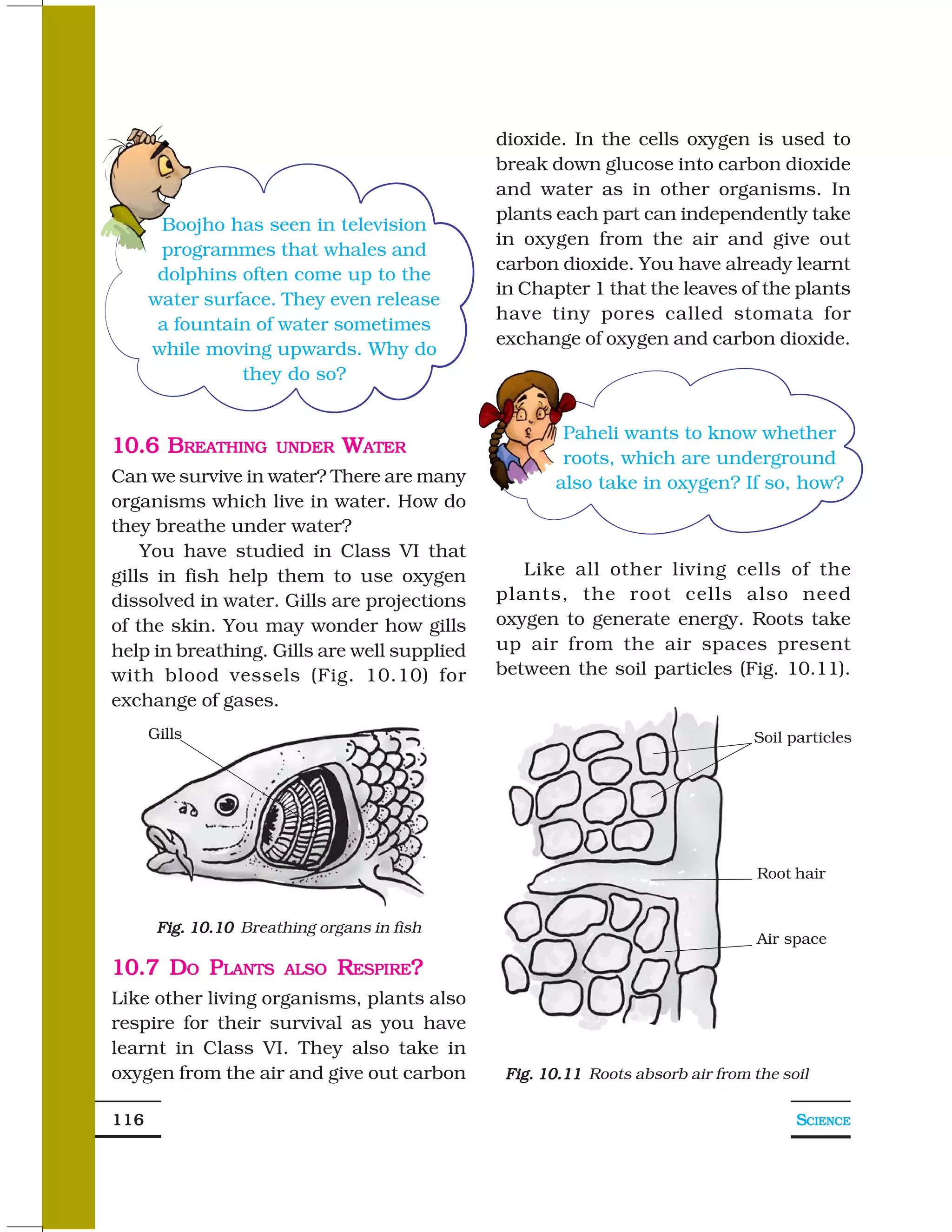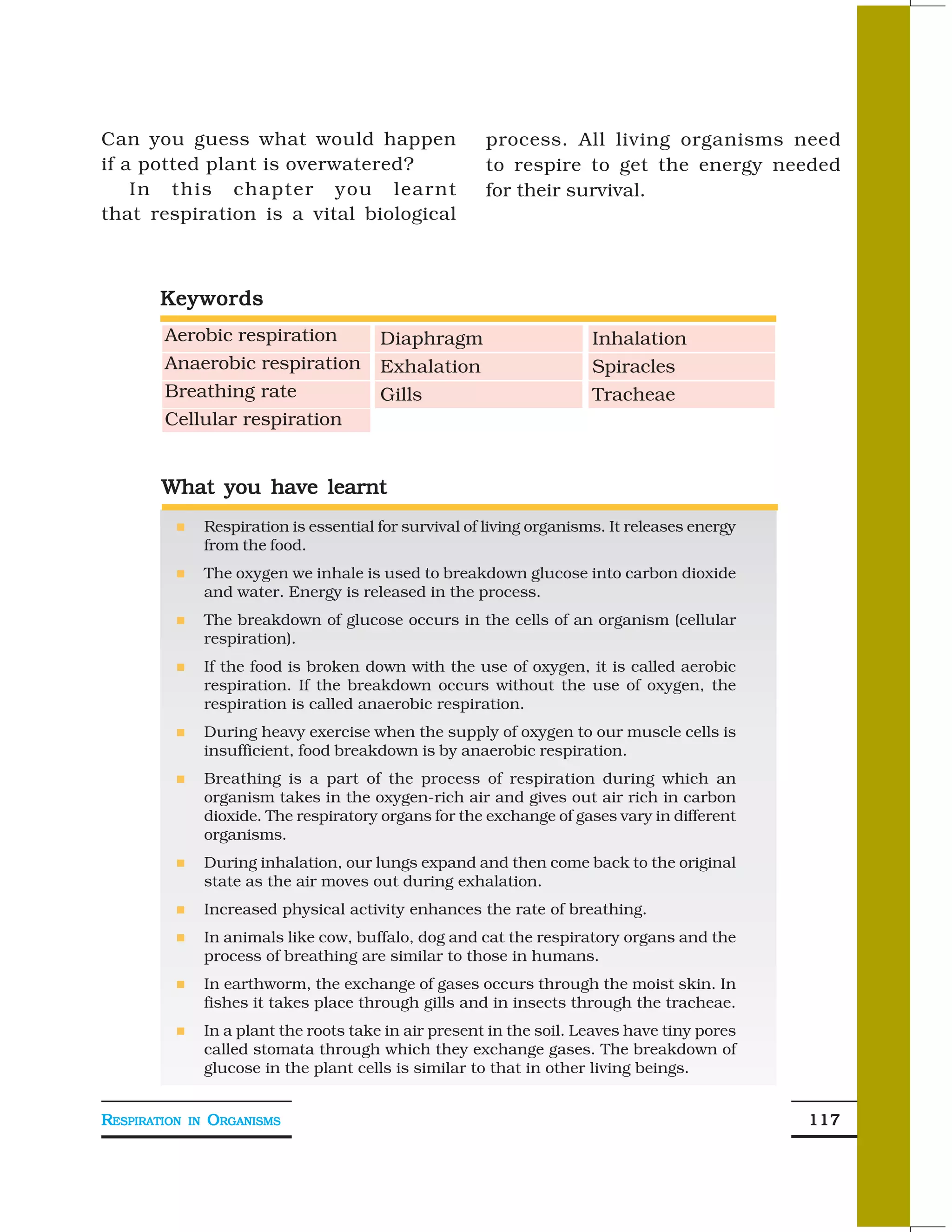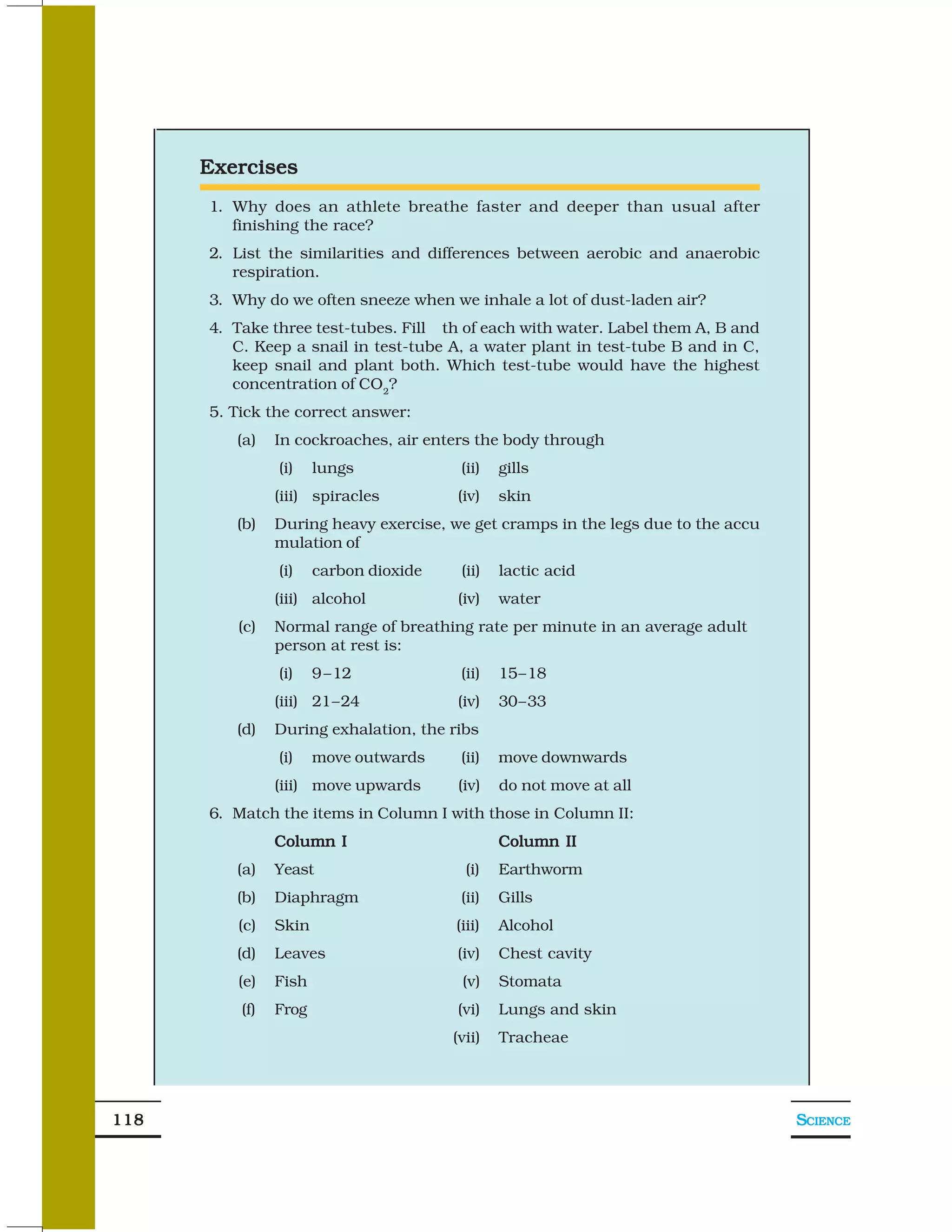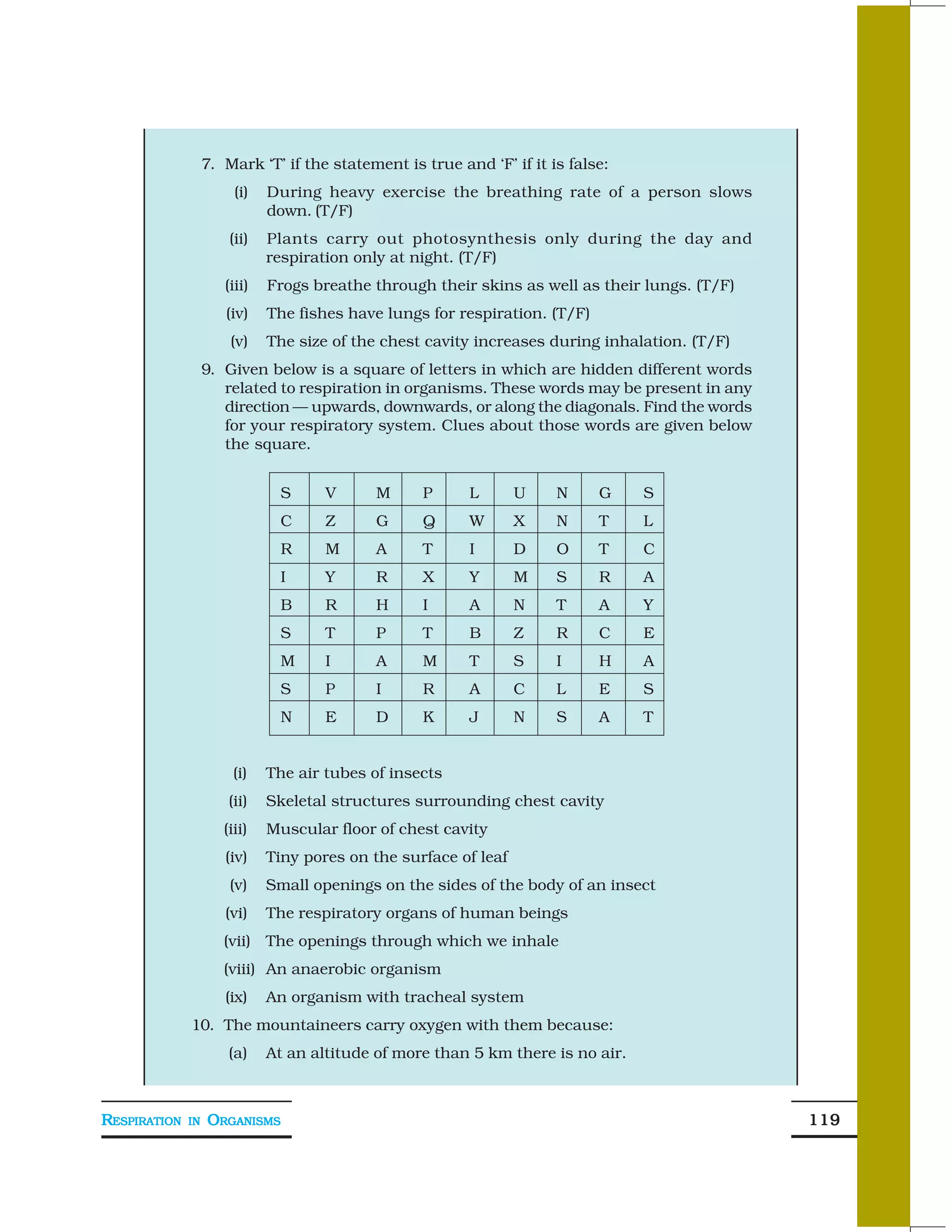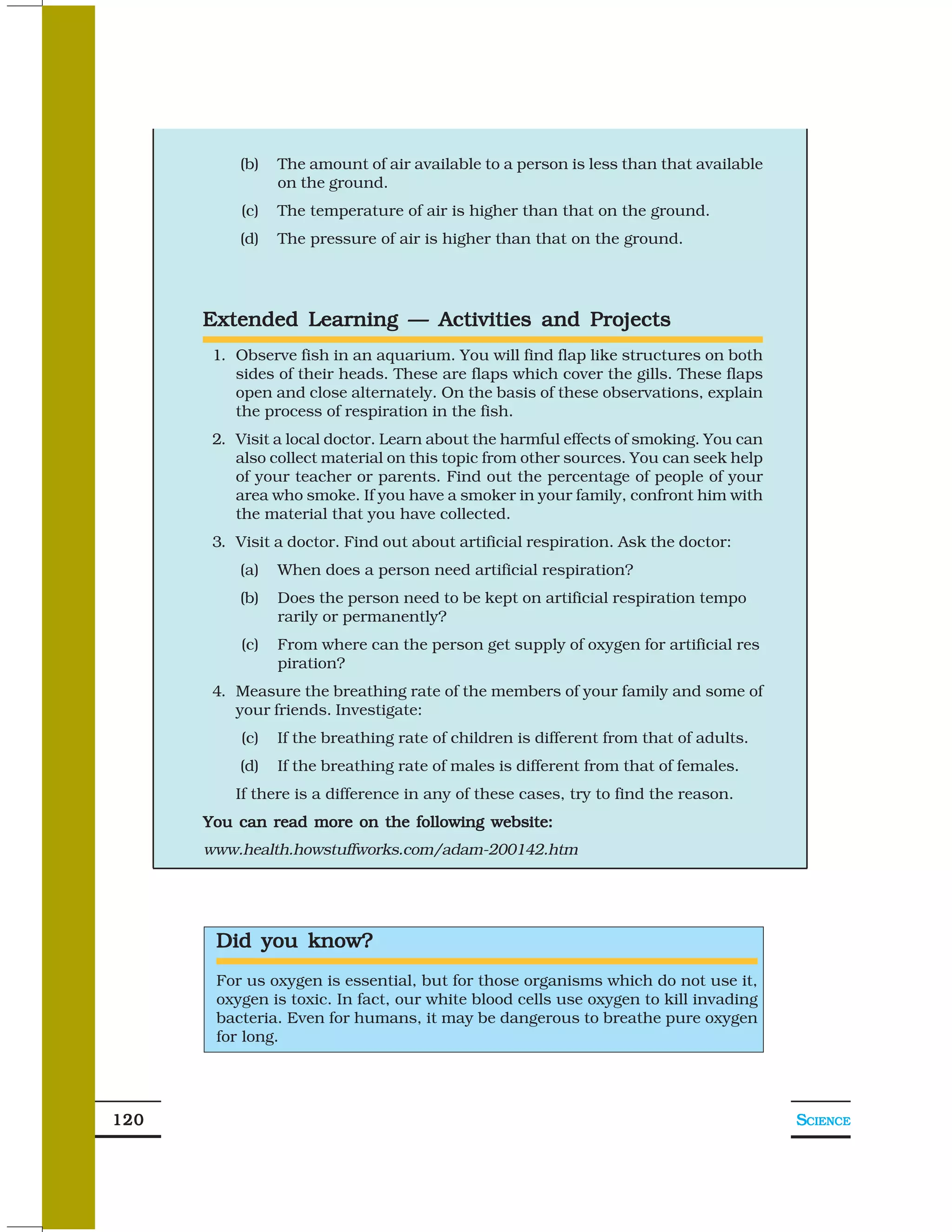1. All living organisms respire to obtain energy from food through cellular respiration. During respiration, oxygen is used to break down glucose and release energy, carbon dioxide and water.
2. Humans and other organisms breathe to take in oxygen which is transported to cells where it is used in cellular respiration. We breathe out carbon dioxide which is a waste product of respiration.
3. The rate of breathing, or breathing rate, increases during exercise or physical activity to supply more oxygen to cells when energy demands are higher. Holding one's breath for too long causes discomfort due to lack of oxygen.
